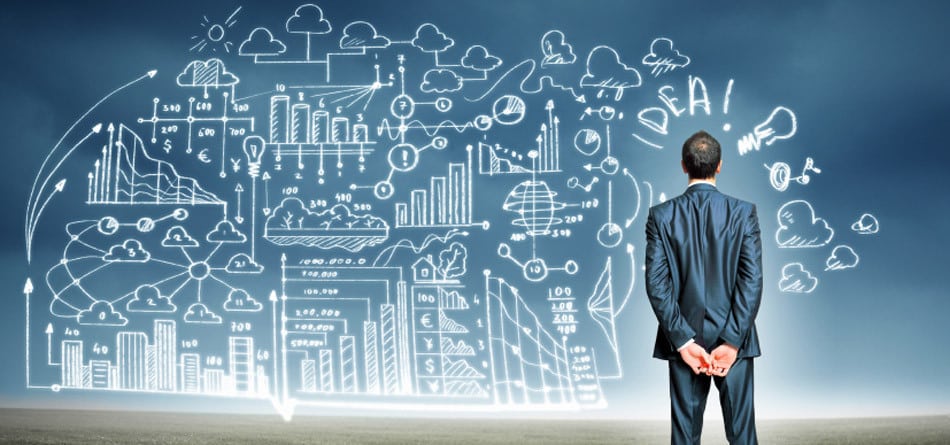
Technology and the Trading Desk
(The following article first appeared in the Q2 issue of GlobalTrading.)
By Eric Boess, Global Head of Trading, Allianz Global Investors

Eric Boess, Allianz Global Investors
Over the last year the hype around the use of technology in asset management has grown exponentially. Clearly the use of data and modern analytics based on artificial intelligence or machine learning are here to stay and will transform the way asset managers design their decision and implementation processes, but as are other parts of the value chain like client servicing, Know Your Customer and collateral management, just to name some.
With regard to execution, trading technology has become an incremental part of the daily routine: almost 100% of orders, irrespective of asset class, are routed electronically to brokers and platforms, and telephone conversations have moved to chats. The price discovery process increasingly refers to wider data sets from related assets or even other asset classes, and as a result productivity gains allowed trading teams to keep their headcount while assets grew.
This wave of technology evolution is comparable to the ‘rise of the spreadsheet’ that swept through fund management in the 1990s. Back then long, printed lists of holdings and trades retrieved from a mainframe computer were replaced with more nimble, small spreadsheets and simple but flexible database solutions. Those opened the door to much faster analytics and visualisation, and for many years Excel became the Swiss army knife of our industry.
Déjà Vu
Trading in 2020 shows a similar pattern: sheets being replaced by small, and once again more flexible R and Python code. Scattered data sources are aggregated and made accessible. Standardised business intelligence software and libraries ease analytical processes. For fellow traders in the same age cohort as the author of this text, a feeling of déjà vu creeps in. Knowing spreadsheets and basic database tools was an edge and became almost a basic requirement in the 90s, and the same holds true for what forms the new fertile ground of IT infrastructure now: basic coding, data handling and manipulation and analytics.
Put more bluntly: would we still hire a trader without those tech skills? Absolutely, but it would be the exception to the norm now. Like in pop culture, the geeks and quants are the new mainstream, not the fringe minority they sometimes were perceived as thirty years ago.
This evolution did not start yesterday, and it is in full swing now. Most trading desks have reached a high level of technology penetration. Algorithmic trade execution is commoditized in equity and parts of derivatives trading and quickly making inroads into
FX. Automated execution is a large part of fixed income trading today, moving from government bonds into credit. The technology applied is usually standardised, using FIX as a backbone and various household names of order management systems in combination with add-on analytics which can be bought or built. It is this latter part in which asset managers can differentiate their alpha generation capabilities: how can you seamlessly implement a unique investment process into efficient execution, preferably with real-time feedback loops between pre-trade cost analytics and investment decisions?
But much of this has already been done by market-leading firms, and while portfolio managers still have a lot of potential insights hidden in non-public, non-structured and other alternative data sources, low-hanging fruit in trade execution seem to be rather scarce now.
There are obviously differences between asset classes, some of which are driven by history, the regulation of marketplaces and the ecosystem of actors in the market.
Equities have been trading via electronic channels for decades, while fixed income markets have only been pushed there by regulation like MiFID II in the recent years. As a result, the use of technology in the asset classes has evolved along very different paths. Equity traders apply lots of statistics on a large amount of tick data available, aggregating price information which is fragmented across exchanges, MTFs, dark pools and other venues.
Bond traders on the other hand do not have that amount of data per instrument, very limited numbers of price points and literally no exchange data, nor a consolidated tape for aggregated price information. As a result the focus of technology in fixed income is more about automating manual execution and a better pre-trade price discovery process, using other assets and correlated instruments.
Siloed ‘Know-How’
The technology applied in each of those asset class silos is fairly advanced, but in many cases the know-how is stuck in silos as well. Sometimes overlooked is the fact that applying technology is to some part a creative process, similar to what the arts and craft movement of the late Victorian age concluded. So breaking down know- how silos to allow for ‘cross fertilisation’ is something we work on at Allianz Global Investors. This includes meetings between different trading teams in which the
use of algorithms, price discovery protocols or workflow enhancements are shared, contrasted and in some cases ported to other teams. The key point is that once a firm has good technology in each asset class, the role of lateral know-how and the possibility to share ideas between teams which in some cases barely speak the same (trading) language becomes critical. ‘Translating’ between bonds, equities, currencies, commodities and derivatives is a difficult task, but vital to get the best out of a modern multi-asset trading team.
Depending on the setup of the trading team, this ‘translation’ needs to take place between IT and Trading: not all Execution desks have the resources to do most of their coding themselves and maintain tools and data, and north of a certain threshold simple governance requires more IT involvement.
Another area where cross-asset requirements become an important success factor is the increased use of industry standards like FIX and open source code.
When I started writing this article I had a piece about technology in mind, like the headline suggests, but in the process it morphed into something about what the real challenge in trading (and frankly the entire asset management industry) actually is: marrying people, technology and process in one firm into something that follows Paul Tudor Jones words of wisdom: “No man is better than a machine, and no machine is better than a man with a machine.”
Ultimately financial markets are very much driven by human psychology (yes, the ‘greed and fear’ model applies), and I personally doubt software will be able to holistically handle them on their own for now. But machines clearly will dominate spaces where large quantities of data are available, speed is of essence and patterns are not too volatile. I leave it to the reader to conclude if trading falls in this category.






